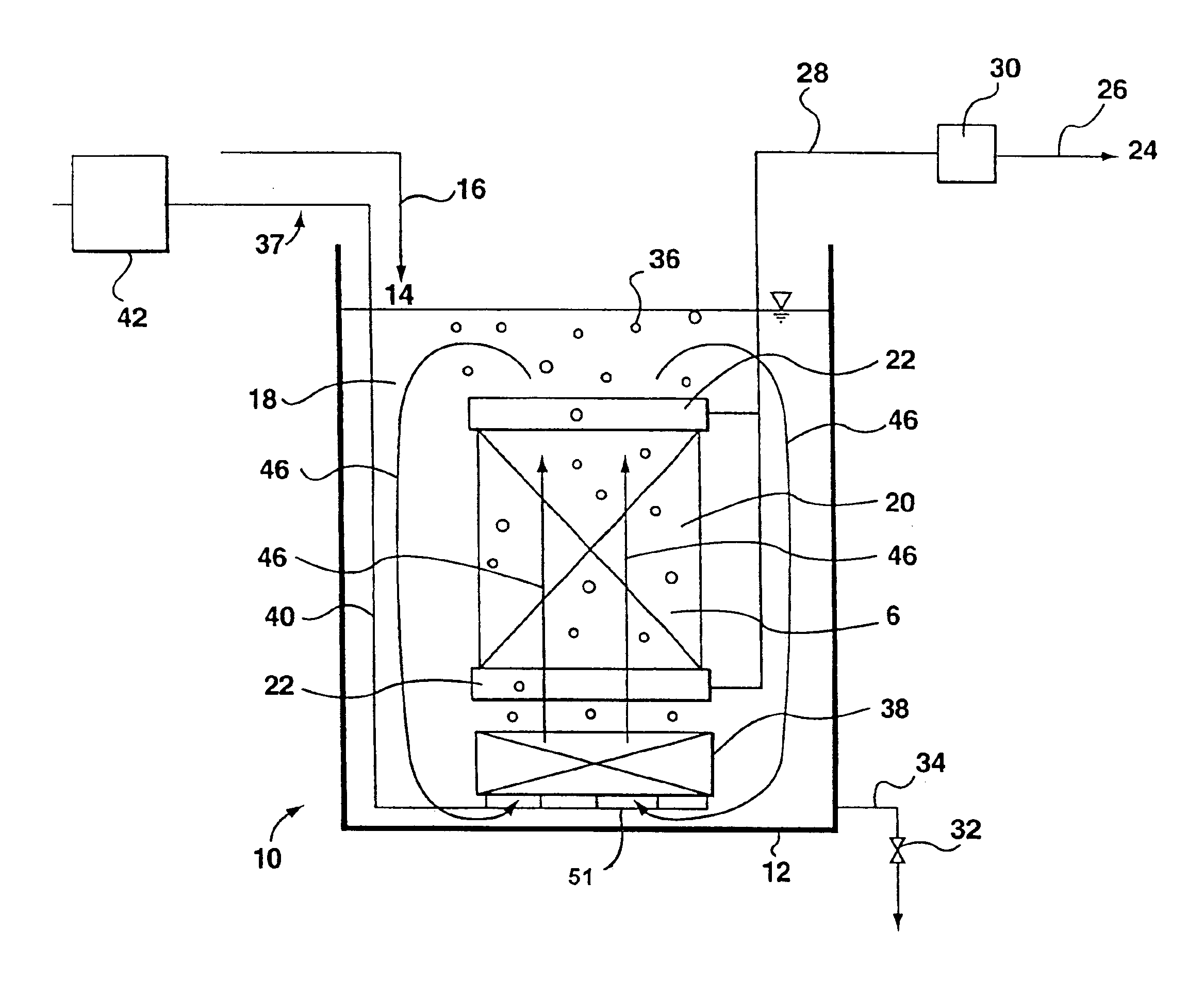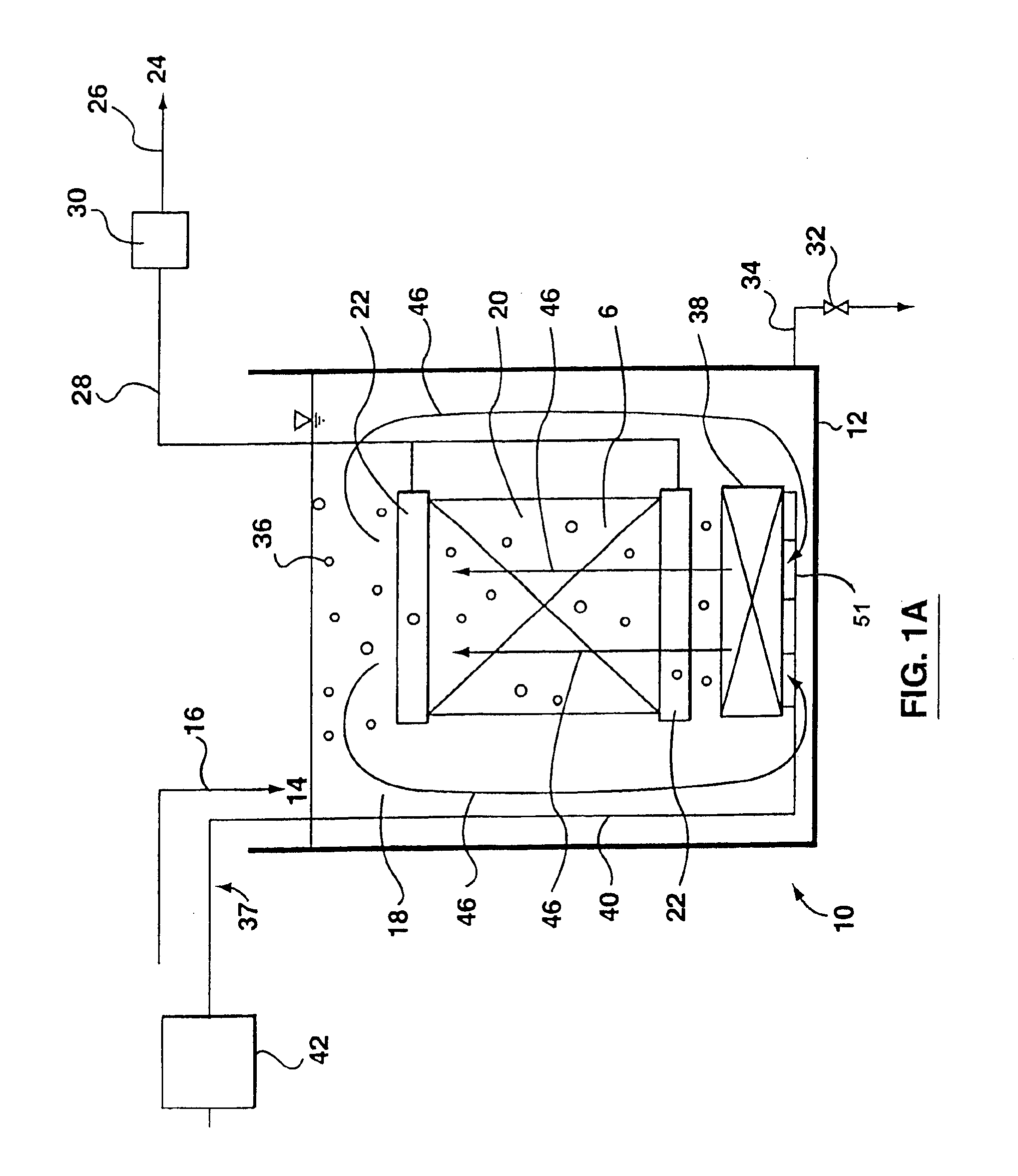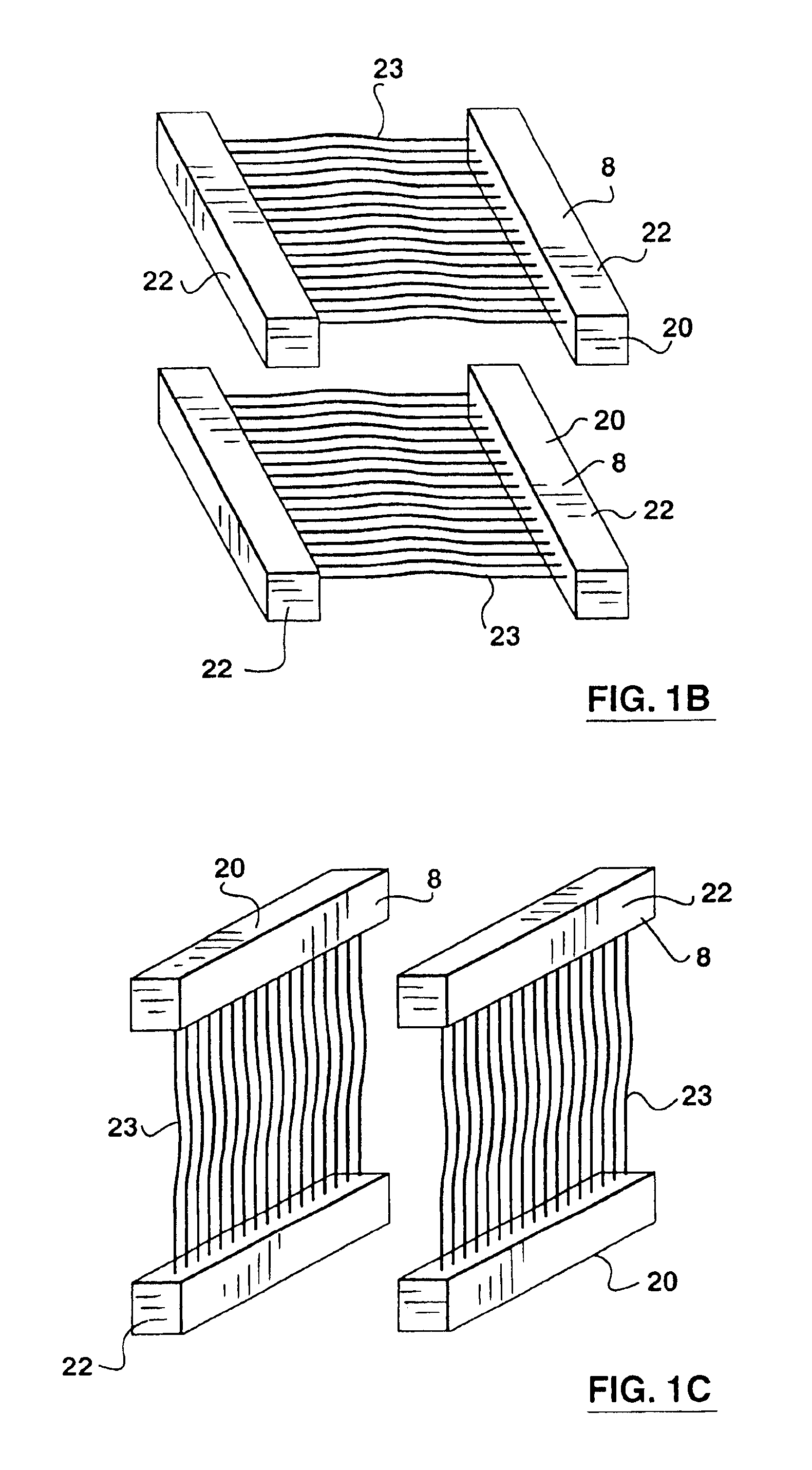Cyclic aeration system for submerged membrane modules
a membrane module and aeration system technology, applied in the field of filtering liquids, can solve the problems of increasing the amount of energy used, significantly increasing the operating cost of the process, and the rate of air flow is often below the effective range, and achieves the effect of convenient illustration
- Summary
- Abstract
- Description
- Claims
- Application Information
AI Technical Summary
Benefits of technology
Problems solved by technology
Method used
Image
Examples
example 1
[0094]A cassette of 8 ZW 500 membrane modules were operated in bentonite suspension under generally constant process parameters but for changes in flux and aeration. A fouling rate of the membranes was monitored to assess the effectiveness of the aeration. Aeration was supplied to the cassette at constant rates of 204 m3 / h (ie. 25.5 m3 / h per module) and 136 m3 / h and according to various cycling regimes. In the cycled tests, a total air supply of 136 m3 / h was cycled between aerators located below the modules and aerators located between and beside the modules in cycles of the durations indicated in FIG. 10A. Aeration at 136 m3 / h in 30 second cycles (15 seconds of air to each set of aerators) was approximately as effective as non-cycled aeration at 204 m3 / h.
example 2
[0095]The same apparatus as described in example 1 was tested under generally constant process parameters but for the variations in air flow indicated in FIG. 10B. In particular, 70% of the total air flow of 136 m3 / h was cycled in a 20 second cycle such that each group of aerators received 70% of the total airflow for 10 seconds and 30% of the total airflow for 10 seconds. As shown in FIG. 10B, cycling 70% of the air flow resulted in reduced fouling rate at high permeate flux compared to constant aeration at the same total air flow.
example 3
[0096]2 ZW 500 membrane modules were operated to produce drinking water from a natural supply of feed water. Operating parameters were kept constant but for changes in aeration. The modules were first operated for approximately 10 days with non-cycled aeration at 25.5 m3 / h per module (for a total system airflow 51 m3 / h). For a subsequent period of about three days, air was cycled from aerators near one set of modules to aerators near another set of modules such that each module was aerated at 12.8 m3 / h for 10 seconds and then not aerated for a period of 10 seconds (for a total system airflow of 12.8 m3 / h). For a subsequent period of about 10 days, the modules were aerated such that each module was aerated at 25.5 m3 / h for 10 seconds and then not aerated for a period of 10 seconds (for a total system airflow of 25.5 m3 / h). For a subsequent period of about 10 days, the initial constant airflow was restored. As shown in FIG. 10C, with aeration such that each module was aerated at 25.5 ...
PUM
| Property | Measurement | Unit |
|---|---|---|
| pore size | aaaaa | aaaaa |
| pore size | aaaaa | aaaaa |
| diameter | aaaaa | aaaaa |
Abstract
Description
Claims
Application Information
 Login to View More
Login to View More - R&D
- Intellectual Property
- Life Sciences
- Materials
- Tech Scout
- Unparalleled Data Quality
- Higher Quality Content
- 60% Fewer Hallucinations
Browse by: Latest US Patents, China's latest patents, Technical Efficacy Thesaurus, Application Domain, Technology Topic, Popular Technical Reports.
© 2025 PatSnap. All rights reserved.Legal|Privacy policy|Modern Slavery Act Transparency Statement|Sitemap|About US| Contact US: help@patsnap.com



